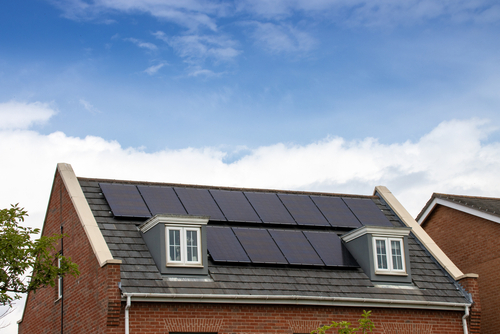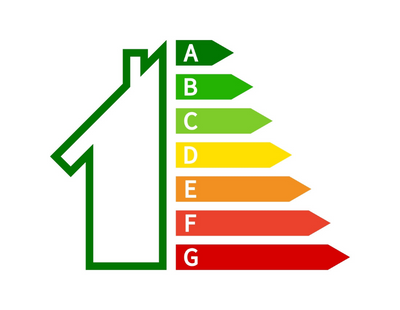
As the autumn weather turns colder, many families are proactively seeking ways to reduce their energy use as, even with the £2,500 average household cap in place from today, October 1, bills have risen to untenable levels.
National Home Energy Week is showing homeowners that savings are possible – and that sometimes they can be relatively quick and simple to achieve. Running from 26thSeptember to 2nd October 2022, the initiative includes advice on energy efficiency, home insulation and installing renewables.
In the private rental sector, many landlords and tenants are working together to solve the problem of energy loss from the home, and online lettings platform lettingaproperty.com shares five top tips for lowering energy bills this autumn to mark National Home Energy Week.
-
1. Service the boiler
Boilers must be serviced annually as part of obligatory gas safety checks. However, servicing them again just before tenants turn them on to ward off the autumn cold can help to ensure that they are operating efficiently. An autumn service has the bonus of potentially heading off any problems before the winter months, when gas engineers are at their busiest and may be hard to call out at short notice.
-
2. Bleed the radiators
Well-bled radiators can have a major impact on energy consumption. Over time, air can become trapped in radiators, making them less efficient and increasing the amount of energy needed to heat the property. Bleeding the radiators in the autumn can therefore reduce energy consumption and costs. Leaving radiators un-bled, on the other hand, can cause the heating system to go into overdrive and potentially fail, resulting in expensive callout charges.
-
3. Cover bare floors
While hardwood and tile floors can look fabulous they also mean cold toes as homes lose their summer heat. Carpeting the property, or simply adding rugs for the autumn and winter months, can help the property to retain its heat and keep feet toasty warm.
4. Prevent air leaks
Running a bead of caulk around the inside and outside of windows can prevent air leaks. It’s a quick and simple job that can eliminate chilly draughts – and with them energy loss – in minutes.
-
5. Use window film
Self-adhesive window film is another quick win when it comes to reducing energy consumption. Applying it over window glass can help the home to retain heat as autumn temperatures dip. And with a wide range of textures and patterns available, it can also be an inexpensive way to give a room a new look and feel. Perfect for the change of season.
-
“Getting a property autumn-ready at the start of the season can pay off significantly, compared to doing it once temperatures have fallen. Reducing energy loss is good for the planet and for the wallet, so we would encourage all landlords and tenants to think carefully about undertaking these and other energy-saving measures as soon as possible” says lettingaproperty chief executive Jonathan Daines.
Want to comment on this story? Our focus is on providing a platform for you to share your insights and views and we welcome contributions.
If any post is considered to victimise, harass, degrade or intimidate an individual or group of individuals, then the post may be deleted and the individual immediately banned from posting in future.
Please help us by reporting comments you consider to be unduly offensive so we can review and take action if necessary. Thank you.















.png)





Join the conversation
Jump to latest comment and add your reply
There's some good advice in this article.
This is what I've done - have a 3-bed rental, built in 1959 and it's not Listed. It was an EPC Grade E and my tenant was complaining of high energy bills last winter.
1. I got my domestic EPC assessor to prepare a draft 'as is' EPC and a draft 'predicted' EPC for the house based on the refurb I was planning to do.
2. My handyman installed 100mm of loft insulation between the joists and then an extra 200mm layer of loft insulation at right angles across the joists. This is current Building Regs standard for a new house. Loft insulation is £24 for a big roll at B&Q
3. I had a Google Nest thermostat/timer installed. I ordered this direct from Google and a professional installer fitted it within the price.
4. My plumber installed TRVs on all the rads and showed the tenant how to use them.
5. My electrician fitted a 'kill switch' by the front door wired into the lighting circuits of the Distribution Board. As the tenant leaves the house one push of the button turns off all the lights in the house. Very simple and effective.
6. My handyman changed all non-LED lamps over to Philip LED lamps
7.I had already got my handyman to install solid insulation board between the joists on the ground floor prior to some recarpeting that I did a few years ago.
8. Pioneer Insulation fitted external wall insulation around the walls. This was a big investment but the house now looks brand new and it's a unit that I'm holding long-term.
9. I couldn't justify the expense of new windows so I bought 'poor man's' secondary glazing from a small British company called WindowSkin. I used their product before to cover a large sash window in the winter in a draughty office that I use to rent. It's a custom cut piece of totally clear Perspex that clips on the inside of the window frame in winter to cut out 100% of window draughts. Stores under a bed in the summer.
10. Whilst we were at it my handyman installed a Nuaire DriMaster Heat Positive Input Ventilation (PIV) unit up in the ventilated loft with a outlet in the 1st floor landing ceiling. The tenant was moaning about condensation and being unable to dry clothes/towels. This simple fit-and-forget unit has totally solved these problems.
11. My EPC assessor came back after I had completed these works and gave the house an EPC Grade B by one point (score 81)). This certificate stays on the national database for the next 10-years.
My mortgage broker expects to be able to get a better rate for me now that I have a 10-year valid EPC Grade B when I have to refinance next year.
The above project took me about 10 x phone-calls and 2 x site visits to sort out. It really wasn't that onerous and I was surprised how straightforward it was after I’d done the initial research
I'm now close to finishing a similar package of works on my own family home – this will raise it from an EPC Grade E to a Grade C and will start to really reduce my energy bills in the next few weeks.
Please login to comment